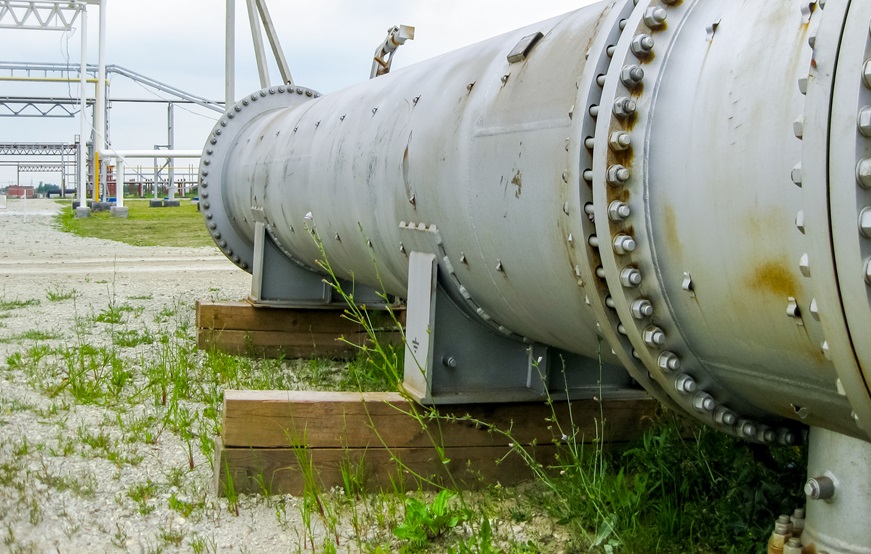Several types of heat exchangers are available from multiple brands. Choosing the right type depends on your specific application and operational conditions. A few of the factors to keep in mind as you begin narrowing down your options include available space, installation costs, maintenance requirements, and—most importantly—the materials and processes that will be required.
Shell and Tube Heat Exchangers
Perhaps the most common are shell and tube heat exchangers, which are made with either a single tube or a series of tubes within a sealed cylinder. This sealed pressure vessel is also called the shell. One fluid flows through the smaller tube or tubes, and another fluid flows around it within the shell. The two fluids are heated or cooled according to the processing needed.
Double Pipe Heat Exchangers
With a similar idea in mind, the double pipe heat exchanger consists of a smaller pipe or pipes enclosed within a larger pipe. One fluid flows through the smaller tube or tubes, while another flows through the larger pipe.
Plate Heat Exchangers
Plate heat exchangers require more construction than the simpler shell and tube or double pipe heat exchangers, but the benefits are worth the added complexity. Several thin plates are bundled together, with pairs of plates creating a channel for fluid to flow. Plates are stacked together, creating a second passage for the other fluid.
Condensers, Evaporators, and Boilers
For processes in which a liquid must change to gas, or vice versa, condensers, evaporators, or boilers are used. Condensers cool heated gas or vapor to create liquid, while boilers and evaporators heat liquid to create gasses or vapors.
A Case for Plate Exchangers
While your specific project or process does ultimately dictate which type of heat exchanger you will need, there is a case for the plate heat exchanger that could elevate it above shell and tube or double pipe exchangers.
Plate exchangers tend to require a smaller footprint. The design of many plate transfer systems allows for turbulent flow at low velocity, which results in low fouling and greater heat transfer rates. Essentially, these heat exchangers tend to be more compact, more efficient, and more cost effective.
Plate exchangers come in various configurations, depending on your specific needs. One option is combining the compact size and efficiency of the plates with the heating and cooling consistency a shell offers with Tranter®’s SUPERMAX® shell and plate heat exchanger. The SUPERCHANGER® needs 20% to 50% of the space a shell and tube changer uses, while providing maximum heat transfer. NOVUSBLOC®, Tranter®’s welded plate exchanger, is also compact and efficient. With the welded plates, gaskets aren’t needed, which allows for minimal fluid loss.
If you’re interested in learning more about Tranter® heat exchangers, particularly which would best suit your needs according to your processes, projects, budget, maintenance and labor capabilities, and the floor space within your facility, reach out to a local provider for assistance.

